Who Really Discovered The Expanding Universe?
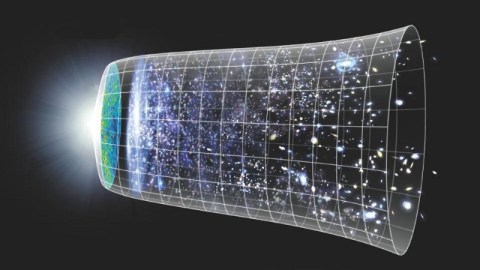
It’s not simply Hubble’s Law anymore, but the real history is far more complex than the stories you’ve heard.
One of the most mind-blowing facts in our existence is that space itself — the very fabric of the Universe itself — doesn’t remain the same. Masses curve and distort it; masses in motion change its nature; ripples flow through the cosmos at the speed of light. Space and time were not separate, immutable properties of the Universe, but are linked together into a single entity known as spacetime.
One of the biggest cosmic surprises came in the 1920s, when a number of scientists put forth a radical new idea: that space could fundamentally change by expanding or contracting over time. This wasn’t some pie-in-the-sky theory, but was overwhelmingly supported by the data, which showed that the more distant a galaxy was, the faster it appeared to recede from us. To be compatible with Einstein’s General Relativity, this meant the Universe must be expanding. From 1929 onward, we’ve never looked back.

For generations, this simple rule — that the average speed a distant object appeared to move away from us was proportional to its distance from us — was known as Hubble’s Law, after Edwin Hubble. The constant that relates the recession speed to the apparent distance, even today, is known as the Hubble constant.
But the problem, in terms of history, is that Edwin Hubble himself wasn’t the first to figure this out. Although Hubble published an extraordinary paper in 1929 detailing the redshift-distance relation and the proportionality constant that links them, the Belgian scientists Georges Lemaître, working with only a fraction of Hubble’s data, had done the same thing two years prior. As a result, astronomers now call this relationship the Hubble-Lemaître law. But the story behind just who discovered the expanding Universe is even murkier.
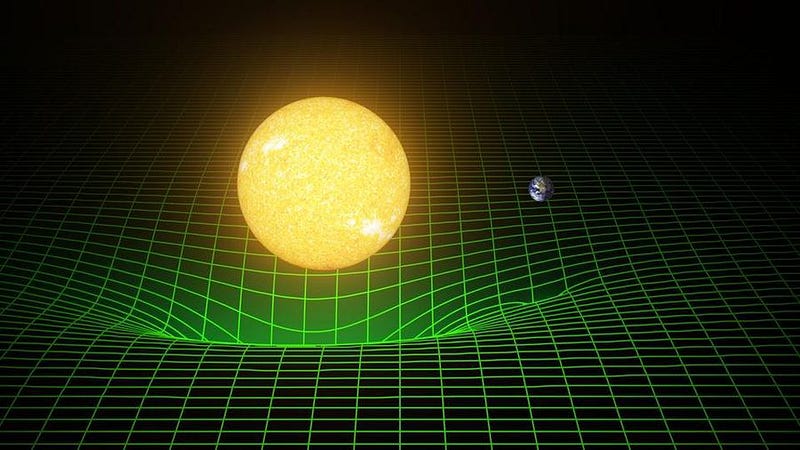
You can start with Albert Einstein, who first put forth his theory of General Relativity in 1915. Einstein’s theory of gravity reduced to Newton’s laws when distances were large and masses were small, and provided unique predictions that agreed with experiments and observations — in contrast to Newton’s — when they weren’t. The orbit of the planet Mercury was the first puzzle to yield, followed by the prediction of bent starlight during a solar eclipse. Where Newton failed, Einstein succeeded.
Yet Einstein realized that his theory predicted that a static Universe was unstable, and that it must expand or contract. Rather than accept this robust prediction, though, Einstein instead rejected it, assuming the Universe must be static. Instead, he introduced his cosmological constant to compensate, leading to what he later referred to as his “greatest blunder” in all of physics.
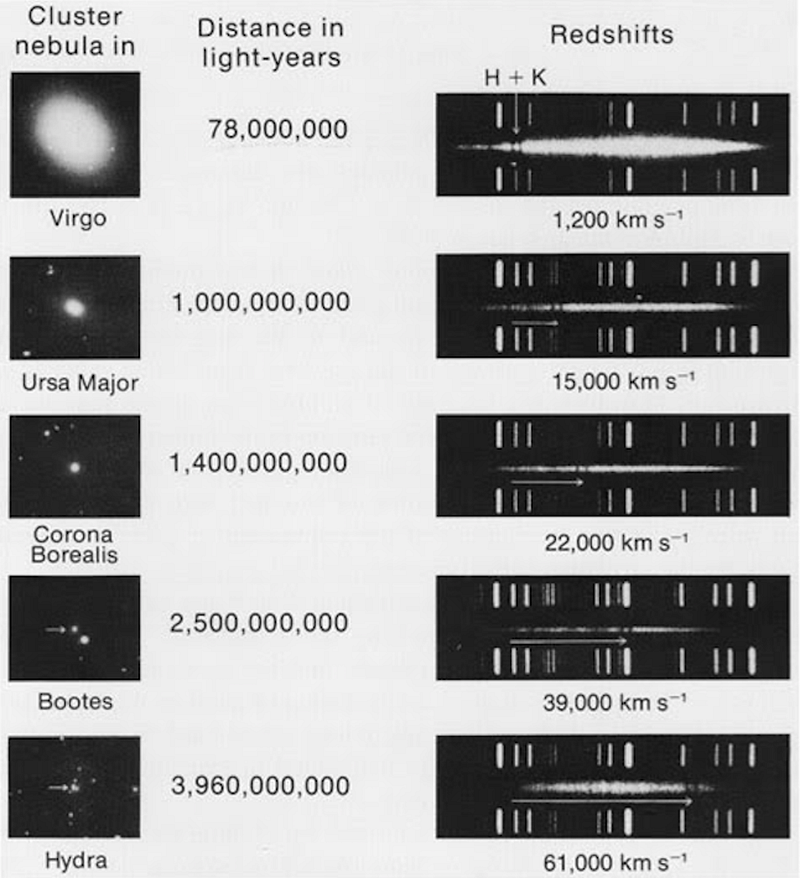
Even before Einstein, there were the observations of Vesto Slipher, which were instrumental in the actual discovery of the expansion of space. In the early 1900s, Slipher was observing what were then known as “spiral nebulae” with a new device on his telescope: a spectrograph. By breaking the light from these galaxies up into their individual wavelengths, he could identify spectral lines coming from the atoms inside.
Since we knew how atoms worked, we could measure a systematic shift of those lines to different wavelengths: redder ones if they were moving away from us, bluer if they were moving towards us. These spirals had speeds that were too great to be bound to our own galaxy; most were redshifted; some were moving much faster than others. His results implied that these nebulae were galaxies of their own, and were mostly receding from us. But Slipher never put the whole puzzle together.
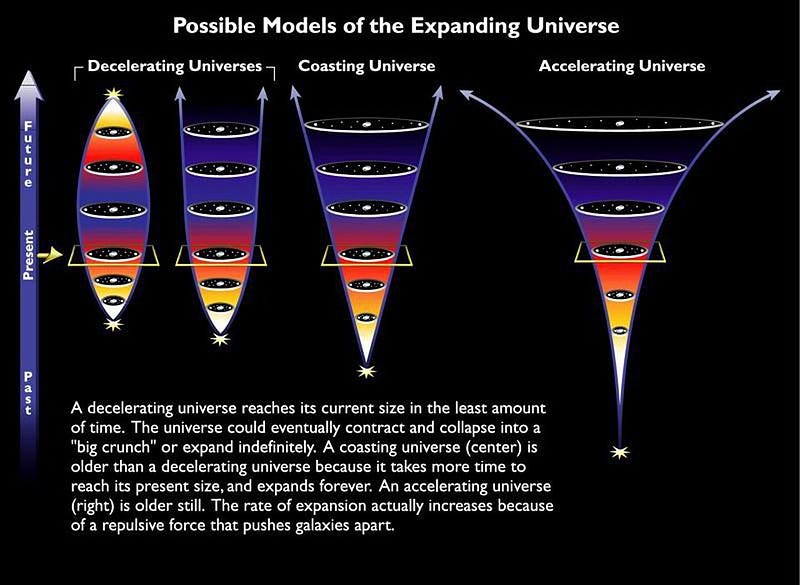
The next person to make a significant contribution was Willem de Sitter, who in 1917 showed that if you imagined a general relativistic Universe dominated by Einstein’s cosmological constant, it would expand. What was more alarming were the properties of the expansion: it would be relentless, continuing forever, and exponential, meaning the farther away an object was from us, the faster it would be pushed away from us.
Although there was not yet sufficient observational evidence to prove that the Universe was expanding, de Sitter showed that General Relativity, even as Einstein imagined it, should lead to an expansion. (And perhaps more remarkably, the type of expansion de Sitter described seems to be present in our Universe today: in the form of dark energy.)

In 1922, the physicist Alexander Friedmann put forth an incredible publication: solving General Relativity for the case of a realistic Universe. For the first time, there was a solution for a Universe that was uniformly filled with “stuff.” That stuff could be matter, radiation, spatial curvature, a cosmological constant, or anything else imaginable.
What he found was, in all cases, the Universe must be either expanding or contracting. If your Universe is filled with stuff — or even if it was completely empty, Friedmann showed — a static Universe was unstable. Given the observations of Slipher and the recent arguments of Heber Curtis at the 1920 Great Debate, an expanding Universe had both theoretical and observational support behind it.
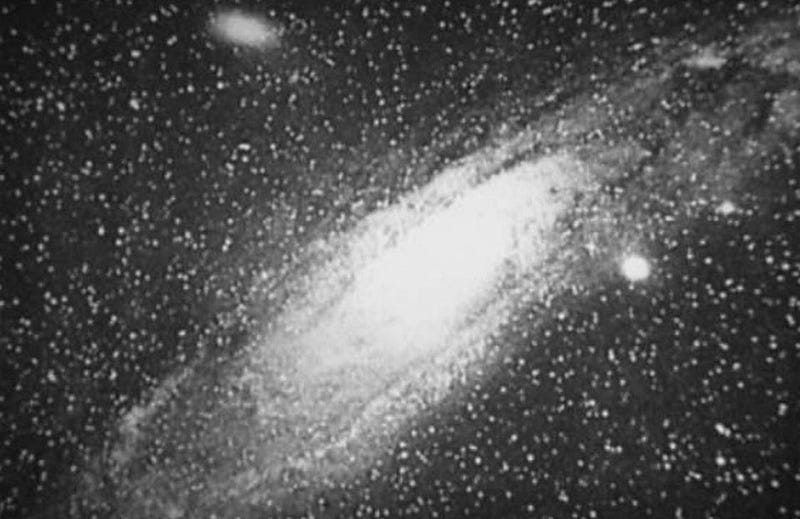
Everything, though, was turned on its head 95 years ago: when Edwin Hubble made perhaps the most important observation in all of astronomy’s history. He was looking for flare-ups of stars, which he thought were novae, in the great nebula in Andromeda. 1887 photography had revealed Andromeda’s spiral structure, and Hubble was measuring these novae in an attempt to understand the distance to Andromeda. He found one, then a second, then a third.
And then the remarkable happened: he found a fourth, in the exact same location as the first. Knowing it was impossible for a nova to recharge so quickly, he excitedly crossed out the “N” for nova and wrote “VAR!” in red pen and capital letters. Because of Henrietta Leavitt’s prior work on variable stars, he was able to calculate a distance to Andromeda, concluding it was far more distant than anything in the Milky Way. It was it’s own galaxy. So were all the spirals.
This was the key piece of evidence putting it all together, and unlocking the expanding Universe.

Hubble, along with his assistant, Milton Humason, went on to collect more data of variable stars in spiral galaxies, allowing them to determine the distance to these objects. By the late 1920s, they had enough galaxies that any scientist who paid close enough attention to all the work out there, and synthesized the proper pieces of evidence, could have put together the relationship between distance and redshift for galaxies. You or I, had we known all of this at the time, could have concluded that the Universe itself was expanding.
Historically, Georges Lemaître was the first to get there, in 1927. But his publication was in French and in an obscure journal; few people found out about it at the time. American scientist Howard Robertson also independently put the pieces together in 1928, concluding the Universe was expanding and calculating a primitive expansion rate. But, sitting on a larger suite of data, Hubble published his breakthrough work in 1929, getting the lion’s share of the credit.
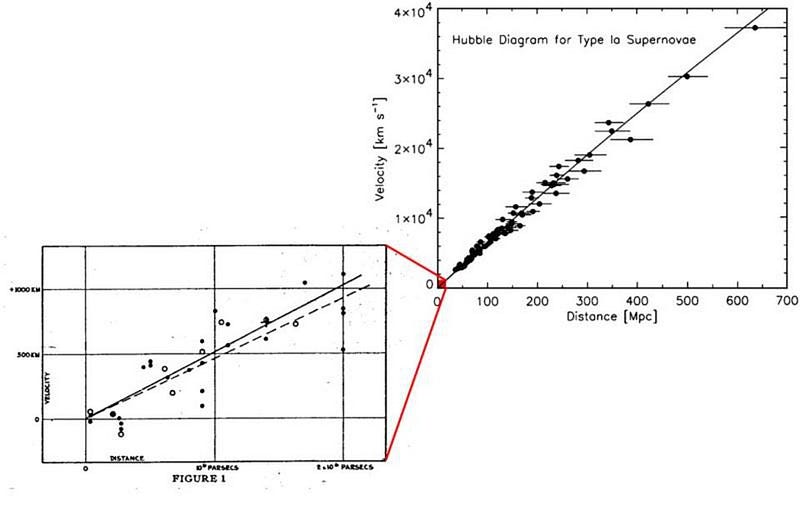
Recently, what was known for generations as “Hubble’s Law” has now been renamed the Hubble-Lemaître law. But the point shouldn’t be to give credit to individuals who’ve been dead for generations, but rather for everyone to understand how we know the rules that govern the Universe, and what they are. I, for one, would be just as happy to drop all the names from all the physical laws out there, and simply to refer to them as what they are: the redshift-distance relation. It wasn’t the work of just one or two people that led to this breakthrough in discovering the expanding Universe, but of all the scientists I named here and many others as well. At the end of the day, it’s our fundamental knowledge of how the Universe works that matters, and that’s the ultimate legacy of scientific research. Everything else is just a testament to the all-too-human foible of vainly grasping at glory.
Ethan Siegel is the author of Beyond the Galaxy and Treknology. You can pre-order his third book, currently in development: the Encyclopaedia Cosmologica.





